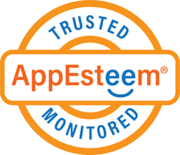The majority of people store at least some form of personal or financial information online. Not only is the number of social media users (already over 300 million) expected to increase steadily over the coming years, the majority of American consumers are now saying that they prefer to handle their banking through a computer or app, rather than in person. While it can be convenient, storing any kind of information online puts you at risk of data breaches. Whether it’s a social media platform, a financial institution, or an e-commerce site, no organization is completely immune to cyberattacks.
If your personal information is compromised in a data breach, it can feel paralyzing. However, taking the right steps quickly can minimize the damage and help protect your identity and finances. Here are those steps laid out for you: explaining exactly what data breaches are, how they happen, what to do if you’re affected, and how to prevent them in the first place.
Understanding Data Breaches
A data breach occurs when unauthorized individuals gain access to sensitive information, such as names, addresses, Social Security numbers, passwords, or financial details. This information can be sold on the dark web or used for identity theft, fraud, and other malicious activities.
How do data breaches happen?
- Hacking — Cybercriminals exploit vulnerabilities in an organization’s systems with the intention of stealing/releasing data.
- Phishing attacks — Scammers trick employees or users into revealing credentials to them directly.
- Weak passwords — Poor password management leads to unauthorized access.
- Insider threats — Data is exposed and shared by someone within the household or organization, either purposefully or accidentally.
Recognizing the risk and knowing how to respond are essential to minimizing the impact of data breaches.
Immediate Steps to Take If Your Data Is Compromised
If you know (or even have cause to suspect) that your personal information has been exposed in a data breach, act swiftly.
Confirm the breach
Before taking any action, ensure that a data breach has actually occurred. If the breach has occurred within a company you have an account with (e.g. an e-commerce site), they should inform you directly.
- Check your email for notifications from the affected company.
- Look for public announcements or news about the breach.
- Visit the company’s website or contact customer support for confirmation.
Avoid clicking on any suspicious links in emails from the company — even those claiming to inform you of a breach — as these could be phishing attempts.
Change affected passwords
If the breach involves login credentials, update your passwords immediately.
- Create strong, unique passwords for each account.
- Use a password manager to generate and store complex passwords.
- Update any other accounts using the same password to prevent further exposure.
Many operating systems are now able to inform you if one of your passwords has been exposed in a data leak, and will notify you to change your details for any accounts using the same password.
Monitor financial accounts
Keep a close eye on your financial accounts for any unauthorized transactions or other suspicious behavior.
- Review your bank and credit card statements regularly.
- Set up transaction alerts to receive instant notifications of suspicious activity.
- Report any unauthorized charges to your bank or credit card provider as soon as they are found.
Enable fraud alerts
A fraud alert notifies creditors to verify your identity before extending credit in your name. Here’s how to set it up:
- Contact a major credit bureau to request a fraud alert be placed on your name. They are required to notify the other two bureaus on your behalf.
- Fraud alerts are free and typically last for one year.
For added protection, consider a credit freeze, which restricts access to your credit report.
Secure your devices
If your data has been compromised, your other devices may also be at risk, especially if connected to the IoT (Internet of Things), such as smartphones and smartwatches.
- Run a full antivirus scan to detect and remove malware from your computer.
- Update all of your devices’ software and security patches.
- Enable device encryption for added protection.
Protecting Against Future Data Breaches
Before stressing over how to prevent data breaches, it’s important to remember that there’s no way to guarantee complete immunity from such attacks — especially when entrusting your data to a second party. All you can do is remain vigilant, and carry out the best practices listed below.
Use strong, unique passwords
Avoid using easily guessable passwords or reusing the same passwords across multiple accounts: this means it could potentially only take a single data breach on an otherwise inconsequential platform to give attackers access to all of your accounts.
When choosing a password, always use a mix of uppercase and lowercase letters, numbers, and special characters. Using a password manager can simplify this task, as it will do all of the password creation (and remembering) for you.
Enable 2FA (two-factor authentication)
Two-factor authentication adds an extra layer of security by requiring a second verification step in addition to your password. Examples include:
- A code sent to your phone or email.
- A biometric scan, such as a fingerprint or facial recognition.
More often than not, hackers won’t have access to the information needed for the second data step – but you might still receive an alert that someone has tried to access your account, which is a good sign to change your password.
Keep software updated
Outdated software can have security vulnerabilities that hackers exploit. Regularly update all operating systems, applications, and antivirus tools you use, as this will ensure that you’re running the latest and safest versions. If you struggle to remember to carry updates out manually, enable automatic updates whenever possible.
Stay vigilant
Be cautious about sharing personal information online and interacting with suspicious emails or messages,
- Avoid clicking on links or downloading attachments from unknown sources.
- Verify the authenticity of websites before entering sensitive information.
- If you receive unexpected correspondence from a company (e.g. your bank sends you an email, when they usually only send you updates through an app), check its authenticity with the company directly before opening it or following any links.
Use a VPN
A Virtual Private Network (VPN) encrypts your internet connection, protecting your data from prying eyes. Choosing a reputable VPN service such as ioloVPN can not only enhance your online security but give you peace of mind while browsing.
Monitoring for Potential Data Breaches
Even with preventive measures in place, it’s essential to stay informed and vigilant. As well as paying attention to the news for any reports on data breaches, you can also do the following.
Set up account alerts
Most banks, credit card providers, and online services offer account alerts. Enabling these notifications allows you to:
- Receive real-time updates on account activity
- Spot unauthorized transactions quickly
Regularly review credit reports
Under federal law, you’re entitled to one free credit report annually from each of the three major credit bureaus. Review your reports for:
- Accounts you don’t recognize
- Incorrect personal information
- Signs of unauthorized activity
Block breaches
Data breaches are an unfortunate reality of life online, but knowing how to respond can make all the difference. By taking immediate steps to secure your information and adopting preventive measures, you can reduce your risk and protect yourself from the consequences of compromised data. Remember: if your data is important enough that people are trying to steal it, it’s important enough to take its protection seriously.
Stay proactive in protecting your privacy with tools from iolo, such as our ioloVPN.








